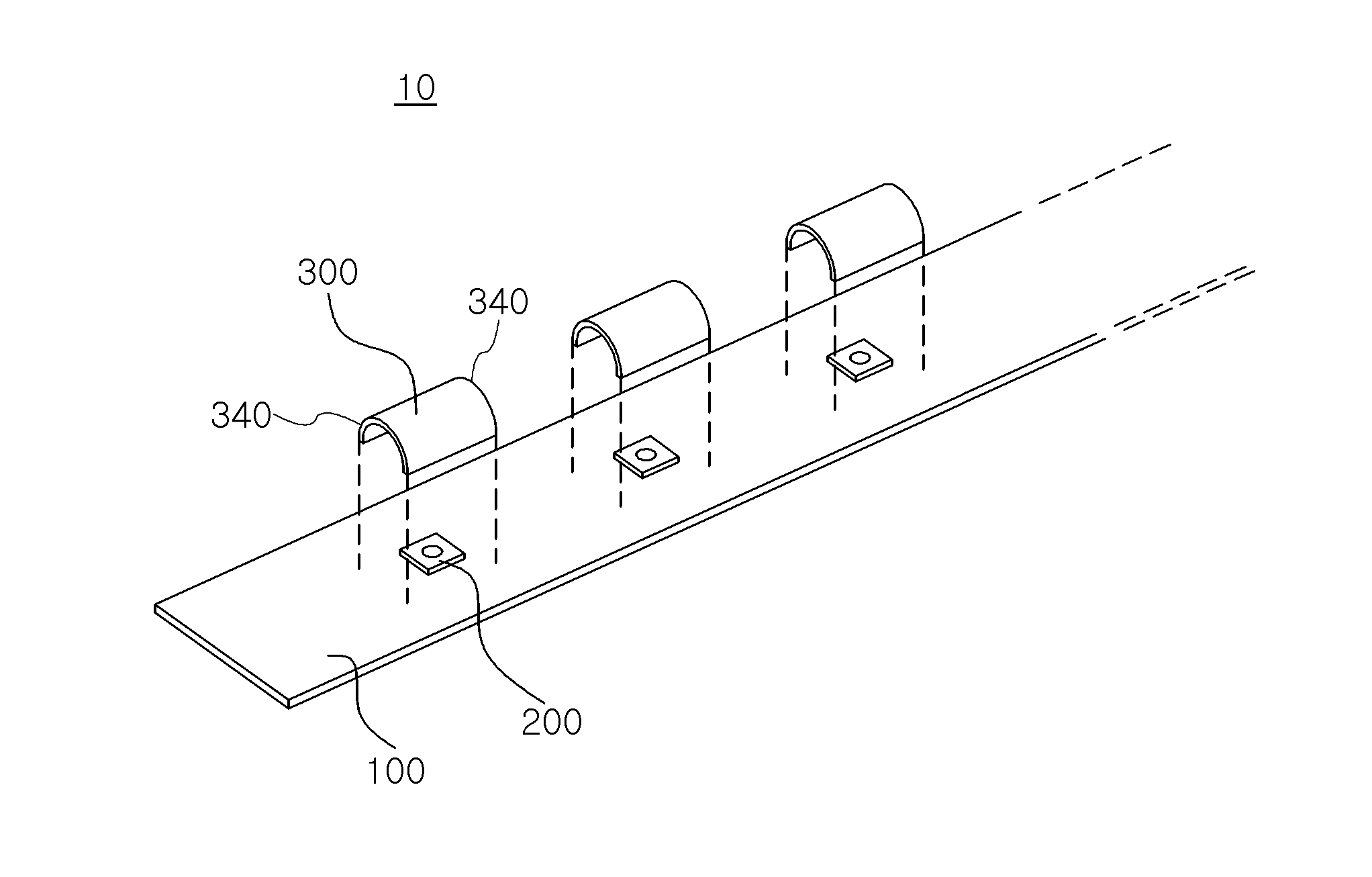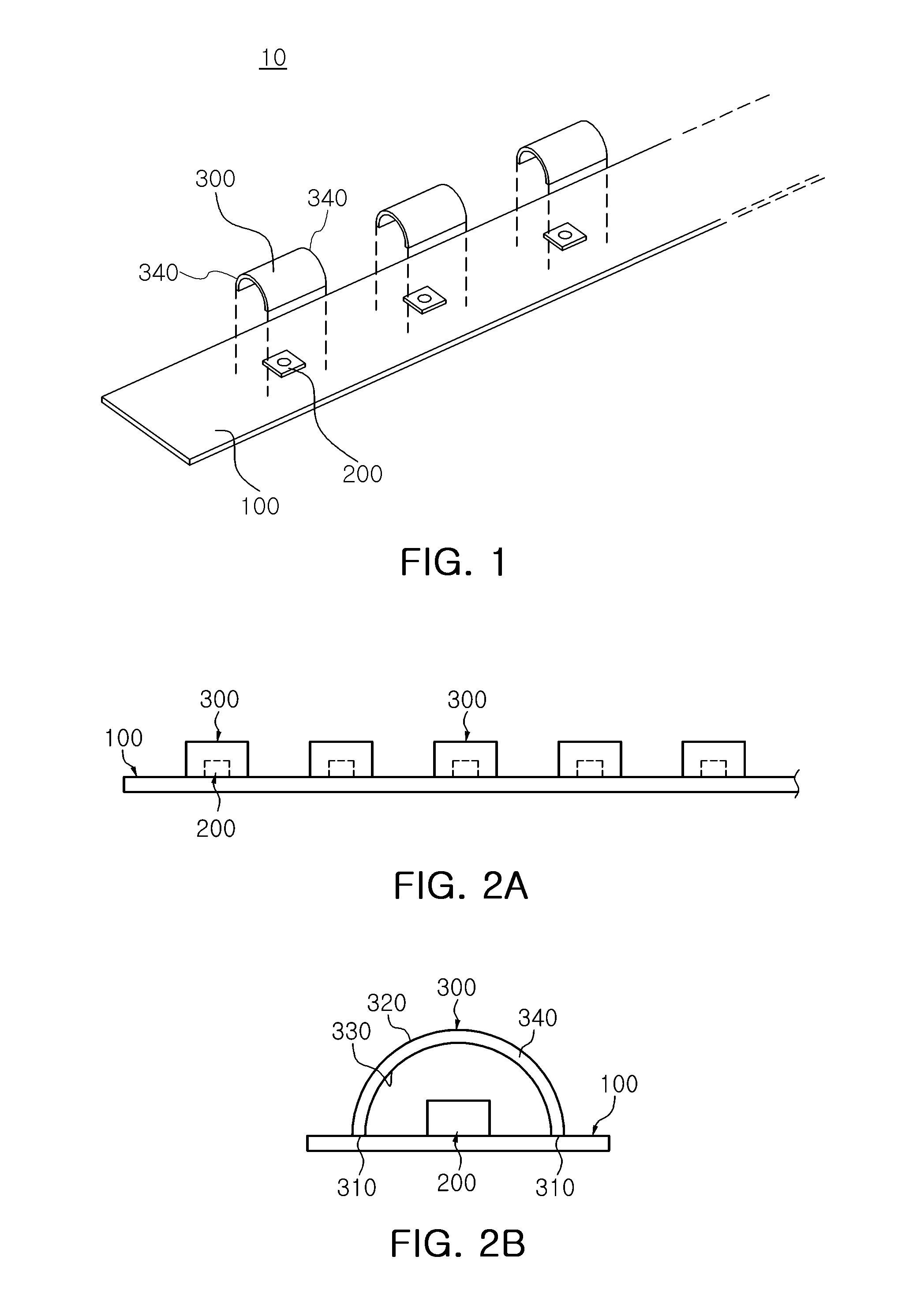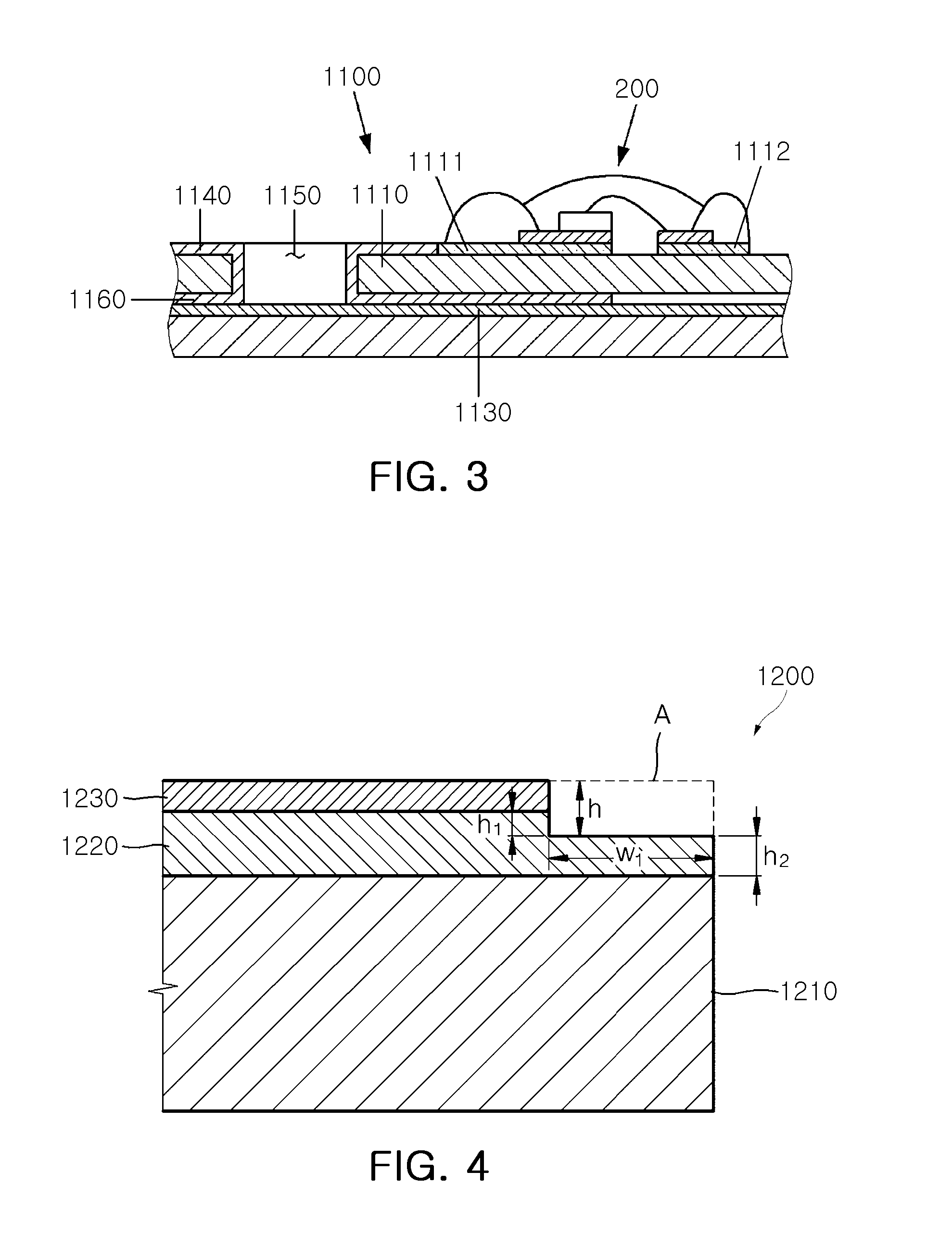Light source module and lighting device having the same
- Summary
- Abstract
- Description
- Claims
- Application Information
AI Technical Summary
Benefits of technology
Problems solved by technology
Method used
Image
Examples
first example
[0094]FIG. 10 is a cross-sectional view schematically illustrating an example of a light emitting device (an LED chip).
[0095]As illustrated in FIG. 10, a light emitting device 2000 may include a light emitting laminate S formed on a substrate 2001. The light emitting laminate S may include a first conductivity-type semiconductor layer 2004, an active layer 2005, and a second conductivity-type semiconductor layer 2006.
[0096]An ohmic-contact layer 2008 may be formed on the second conductivity-type semiconductor layer 2006, and first and second electrodes 2009a and 2009b may be formed on upper surfaces of the first conductivity-type semiconductor layer 2004 and the ohmic-contact layer 2008, respectively.
[0097]In the present disclosure, terms such as ‘upper portion’, ‘upper surface’, ‘lower portion’, ‘lower surface’, ‘lateral surface’, etc., are determined based on the drawings, and in actuality, the terms may be changed according to a direction in which a light emitting device is dispo...
second example
[0127]In case of manufacturing a large light emitting device for a high output, an LED chip illustrated in FIG. 11 having a structure promoting current spreading efficiency and heat dissipation efficiency may be provided.
[0128]As illustrated in FIG. 11, the LED chip 2100 may include a first conductivity-type semiconductor layer 2104, an active layer 2105, a second conductivity-type semiconductor layer 2106, a second electrode layer 2107, an insulating layer 2102, a first electrode 2108, and a substrate 2101, laminated sequentially. Here, in order to be electrically connected to the first conductivity-type semiconductor layer 2104, the first electrode layer 2108 includes one or more contact holes H extending from one surface of the first electrode layer 2108 to at least a partial region of the first conductivity-type semiconductor layer 2104 and electrically insulated from the second conductivity-type semiconductor layer 2106 and the active layer 2105. However, the first electrode la...
third example
[0137]An LED lighting device provides improved heat dissipation characteristics. Further, the LED lighting device employing an LED chip may have a relatively low heating value. As an LED chip satisfying such requirements, an LED chip including a nano-structure (hereinafter, referred to as a ‘nano-LED chip’) may be used.
[0138]Such a nano-LED chip may include a recently developed core / shell type nano-LED chip, which has a low binding density to generate a relatively low degree of heat, has increased luminous efficiency by increasing a light emitting region by utilizing nano-structures, and may minimize or prevent a degradation of efficiency due to polarization by obtaining a non-polar active layer, thereby improving drop characteristics.
[0139]FIG. 12 is a cross-sectional view illustrating still another example of an LED chip that may be employed in a light source module.
[0140]As illustrated in FIG. 12, a nano-LED chip 2200 may include a plurality of nano-scale light emitting structure...
PUM
 Login to View More
Login to View More Abstract
Description
Claims
Application Information
 Login to View More
Login to View More - R&D
- Intellectual Property
- Life Sciences
- Materials
- Tech Scout
- Unparalleled Data Quality
- Higher Quality Content
- 60% Fewer Hallucinations
Browse by: Latest US Patents, China's latest patents, Technical Efficacy Thesaurus, Application Domain, Technology Topic, Popular Technical Reports.
© 2025 PatSnap. All rights reserved.Legal|Privacy policy|Modern Slavery Act Transparency Statement|Sitemap|About US| Contact US: help@patsnap.com



